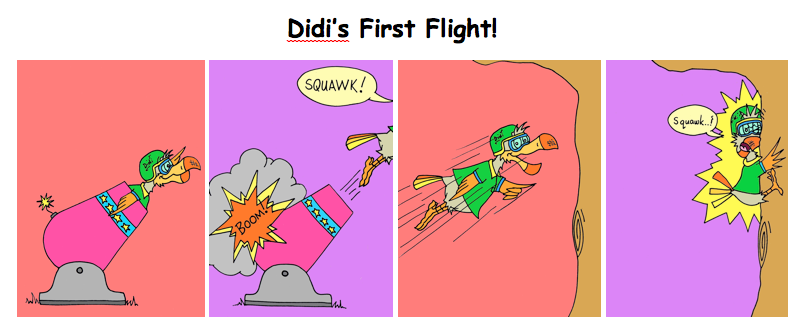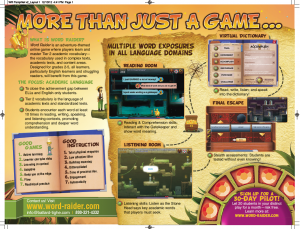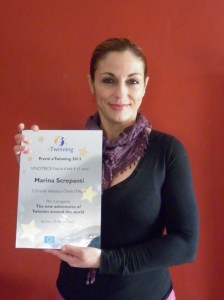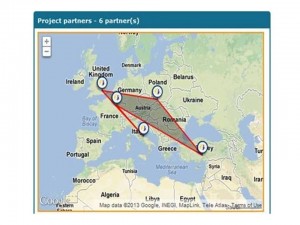Today, using online learning spaces we are able to connect students around the world to work on a shared task. Surely, as easy as it seems, linking schools through exciting projects and supporting them is a challenging job. In this issue I would like to give you information about The North London Schools International Network (NLSIN), managed by Anne Roots.
Background:
The North London Schools International Network (NLSIN) is a north London based organisation that plays a key advisory role in supporting nursery, primary, secondary, special schools and colleges in developing the international / global dimension to education.
As the only organisation of its kind nationally, our member schools are at the fore-front of international activity in London – there is concrete evidence that across the network participation in international programmes far exceeds that of any other area in the capital. Of NLSIN’s 180 members, over two thirds are involved in funded collaborative curriculum based international activities with schools across the globe. Most of the projects which our schools are involved in use ICT as the main method of communication and vehicle with which to exchange and deliver project work. Schools are now being inspected in terms of how they support the development of Social, Moral, Spiritual and Cultural skills and activities of this kind are a perfect vehicle with which to do this.
The Range of NLSIN Activities:
Some schools we support are involved in large multilateral Comenius EU funded projects across Europe with ICT as their main focus. Any area of the curriculum lends itself to this type of collaborative international learning with topics ranging from A Day in the Life of Our School to ICT Across Europe or Water – Building Bridges but ICT is often at the centre of the project. Schools are using email / on-line forums / Skype / videoconferencing / file sharing software / Managed Learning Environments to communicate but also as the focus for cross curricular activities. Other schools are involved in one to one partnerships with schools through our Area Link with the Adansi region in Ghana. These pairs are exploring active global citizenship and development education but again using technology to communicate.The secondary school in Ghana has been developed as an ICT hub for local schools in the region and is training teachers to use technology within the curriculum.
Etwinning
As a prelude to large multilateral funded project, many NLSIN schools are involved in Etwinning projects which are a great for those new to working collaboratively in an international context. The portal, which is an online community for school staff across Europe provides teachers with little ICT expertise the opportunity to find and work with partner institutions through curriculumfocussed classroom projects. ETwinning offers wide-ranging help and support from ICT training and partner finding to developing project ideas. There is an eTwinning Desktop and TwinSpace and large bank of resources for participating schools. NLSIN schools are involved in very simple 2 week projects looking at ‘Our School’ or ‘A Day in the Life Of’ to more complex termly projects around European identity and European history.
Through its close links to the British Council NLSIN runs joint hands-on INSET for local schools new to the programme.
Area Link with China:
The network now has 26 schools linked with its partner, The Shunde Education Bureau in Shunde, Guangzhou, China and again most of these are involved in ICT projects with each other. Several are now using Fronter / Managed Learning Environments to upload joint project work and communicate with each other – these platforms are often the easiest way for schools to overcome problems with firewalls and access that are particular to linking with China.
A cluster has just finished a British Council Connecting Classrooms project focussing on Creativity – for many this involved innovative ICT activities:
Wilbury Primary School in Enfield used Wiki as an online platform to extend learning – pupils looked at Chinese myths and legends as part of the literacy curriculum which were then integrated into ICT lessons by turning them into an animation: http://connectingclassroomswithchina.wikispaces.com The children not only found out about Chinese culture but they developed higher-level skills through technology such as; critical thinking, problem solving, communication, creativity and team work. The children learned to use an online shared platform collaboratively and developed their critical thinking skills through joined activities on this platform.
One of our Academies in Enfield worked on a collaborative project with their Chinese partners Building on Digital Maths and the Chinese British Youth Experience of Digital Technology. From this a digital sound wall / media installation was developed. Pupils in both schools electronically produced music describing their experiences of Chinese/English teenage life. This was done using free online digital sound editors and children in both China and the UK jointly edited the work hosted.
Forums and Moodle provided digital interface and outcomes were published online and presented to BBC The Word as a completed sound file.
The project is being embedded as a specific unit of work on Digital Sound (called Creating a Digital Sound Track by understanding Digital Maths) and published as a creative unit of Work for Maths, Media and ICT. Software such as Shareware / Audacity (multilingual audio editor recorder for Windows, Mac OS X, GNU/Linux and other operating systems) was used and sounds and Images were shared at Google Drive and Vimeo which was the final home for output. All of the above are now being used as resources for both schools.
Global Partners Junior:
Global Partners Junior is an award-winning educational program that connects New York City youth, ages 9-12, with students around the world through the internet. Throughout the school year, activities are guided by a teacher (during school) or after-school leader (after-school time). Students post and read messages on a secure, password-protected internet forum, share media projects and research facts about their communities. Students develop local pride and learn about international cities. This program provides an extraordinary opportunity for children to develop global awareness, computer literacy and communication skills. Since 2010 NLSIN schools have been involved in this Global ICT project – communicating and sharing project ideas on a range of themes from the World Market Place to Urban Stages.
International School Award (ISA):
Over 90 NLSIN schools have achieved the British Council’s International School Award (ISA) – an on-line accreditation scheme which celebrates the embedding of the international / global dimension to education. This award recognises the fact that across a school pupils / staff and the wider community are actively involved in collaborative international activities – again, many of these have innovative ICT activities at their core.
Model United Nations:
In 2012 5 NLSIN schools participated in this collaborative initiative with the School Linking Network (SLN) and a further 3 will be taking part in 2013. The overall aim of SLN-MUN programmes is to engage students – from year 9 to 13 – in current 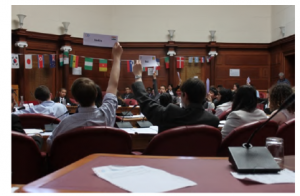 world affairs while providing them with the opportunity to explore the four key questions: Who am I? Who are we? Where do we live? How do we all live together? It is a starting point for students in their understanding of why people or countries are in conflict and how the International community is responding. Most importantly, the programme encourages young people to make a difference as citizens of their local as well as International communities.
world affairs while providing them with the opportunity to explore the four key questions: Who am I? Who are we? Where do we live? How do we all live together? It is a starting point for students in their understanding of why people or countries are in conflict and how the International community is responding. Most importantly, the programme encourages young people to make a difference as citizens of their local as well as International communities.
SLN-MUN students are tasked with representing 20 countries from across the world and work in mixed teams to consider ways to resolve the issue debated. During the preparation stages the students, who meet twice prior to the final event, communicate with their team members via a specially created online virtual learning environment.
Training:
NLSIN runs an annual staff development programme to support schools in addressing issues around the international / global dimension genda which includes sessions such as Using Your Managed Learning Environment Within International Projects / Etwinning – Developing Collaborative On-line Projects With Schools Across Europe / Gaining Accreditation through the On-line International School Award NLSIN is a membership organisation providing the following core service to London schools:
- On-going and unlimited individual support on all funding applications
- Unlimited support with all levels of the International School Award
- Free staff development for all member schools
- Tailor made staff INSET
- Advice and support in developing the global dimension
- Regular information about funding, international programmes and initiatives
- Network of advice from other schools
- Summer Exhibition to display work
- Help with partner finding
NLSIN can help bring funding into schools for:
- Study visits for TAs, teachers, headteachers
- Pupil travel
- Local, national and global funded linking opportunities
If you would like to find out more about NLSIN / membership fees / support offered please contact: nlsin@barnet.gov.uk













